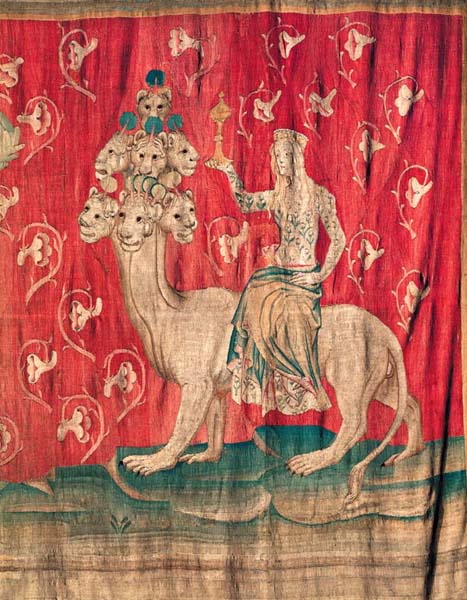Image Details

Erich Lessing/Art Resource, N.Y.
“I saw a beast rising out of the sea,” begins a vision in Revelation 13, “with ten horns and seven heads, with ten diadems upon its horns and a blasphemous name upon its heads … And to it the dragon gave his power and his throne and great authority. One of its heads seemed to have a mortal wound, but its mortal wound was healed, and the whole earth followed the beast with wonder” (Revelation 13:1–3).
Author Collins argues that the Book of Revelation’s original audience would have understood this cryptic imagery to refer to the Roman Empire and its emperors. The detail of the healed wound, she points out, recalls the emperor Nero, who committed suicide in 68 C.E. but who was rumored to be preparing to return from the East to reclaim power in Rome—making him quite literally an anti-Christ figure.
The tapestry shown here was created in the second half of the 14th century by the Parisian weaver Nicolas Bataille for a royal chateau in Angers, France. It and others depicting scenes from the Book of Revelation are known collectively as the Apocalypse of Angers.
The emperor Domitian (81–96 C.E.) is depicted on the front (obverse) of this coin minted in Ephesus, one of the seven churches in the Book of Revelation, as was Pergamon; the back of the coin (reverse) portrays Zeus. Like his predecessors, Domitian persecuted the early Christians.
The Book of Revelation was likely written during Domitian’s reign. The author of Revelation, aware of the association between Roman emperors and Roman gods (two sides of the same coin, as it were), would thus naturally cast his denunciation of the anti-Christian rulers in imagery that condemned their pagan gods—as he does when he alludes to the altar of Zeus at Pergamon as Satan’s throne.
